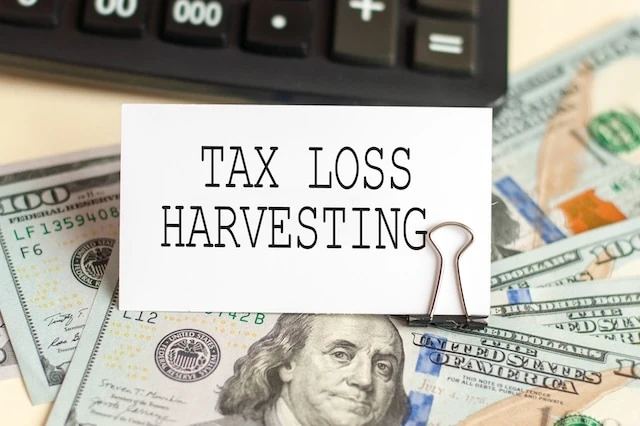Much like real estate is all about “location, location, location,” for most long-term investors, portfolio construction is all about “diversification, diversification, diversification.” A diversified set of holdings is a must not only in protecting your nest egg and dampening volatility, but also ensuring you’re exposed to several avenues of return—not just one.
The conventional approach to locking in this kind of diversification is to buy a few index funds—funds that track the performance of a select group of stocks (such as the S&P 500 Index or the Dow Jones Industrial Average), bonds (such as the Bloomberg U.S. Aggregate Bond Index), or other assets. With just a couple clicks of your mouse, you can own thousands of securities, often at a razor-thin expenses.
But certain investors may benefit from another route to diversification: direct indexing.
Let’s say you have a concentrated stock position that you want to liquidate tax-free then diversify into an index-like investment. Or let’s say you’re anticipating a large capital gain in the future (perhaps from the sale of a business or some other large asset) and want to bank capital losses now to offset those future gains. In these and other advantageous but complex situations, you might benefit from a more tailored solution than plain-vanilla index funds.
Today, I’m going to provide a primer on direct indexing, including what it is, how it works, its pros and cons, and which investors can really take financial advantage of this increasingly popular financial tool.
Featured Financial Products
How Does Direct Indexing Work?

An “index,” in the investment world, is little more than a group of securities, such as stocks or bonds, bound together by a set of rules. For instance, to be added to the S&P 500, a company needs to trade on the New York Stock Exchange or Nasdaq, have a market capitalization of at least $20.5 billion, trade at least 250,000 shares monthly in each of the six months leading up to the date in which the stock is evaluated, and meet other criteria.
If you want to invest in an index like the S&P 500, your easiest and most cost-effective path is to buy an index fund, which attempts to own all (or in some cases, a “representative sample”) of the stocks in an index, in roughly the same proportions as they exist in the index.
With direct indexing, however, you actually invest in all the individual securities that make up the chosen index, in the same weights as the index.
But you don’t have to stay perfectly faithful to the index—over time, direct index investors or their financial advisors make adjustments as they see fit.
Let’s say you want to increase your exposure to a certain stock you expect to grow substantially in value, or you want to completely exclude certain stocks that you’re confident will fall. You can adjust your portfolio to be “overweight” or “underweight” certain holdings, relative to how the index holds them (referred to as a “tilt”). This is a level of customization you won’t find if you simply purchase an index-tracking mutual fund or exchange-traded fund (ETF).
Also worth noting is that these assets are held in a separately managed account (SMA). This is frequently a taxable account, because direct indexing also allows you to put a powerful tax strategy to work. (More on this in a minute.)
Related: 5 Costly 401(k) Rollover Mistakes You Must Avoid
What Are the Advantages of Direct Indexing?

Direct indexing has a number of benefits, but they can largely be slotted into one of two categories: taxes and customization.
Taxes
As you might already know, when you sell an investment for a profit (aka capital gain), you generally trigger capital gains taxes. Conversely, if you sell an investment for less than what you paid for it, you generate a capital loss, which can be used to offset capital gains (or even ordinary income, if you have no capital gains to offset). This can be used strategically—it’s referred to as “tax-loss harvesting“—to minimize your tax bill every year.
What you might not know is that investment funds, when they buy and sell securities as part of the day-in day-out of operating the fund, can generate capital gains. And if they do, they have a legal obligation to disperse any capital gains to shareholders in that same year—which can trigger taxes for you. Conversely, when a fund experiences net losses, they can’t really distribute those losses, so whatever losses don’t offset gains are carried forward until they can be used.
With direct indexing, however, you’ll get similar exposure to an investment fund and the ability to use tax-loss harvesting. And you can put this ability to good use in a number of ways, such as …
- Unwinding a concentrated position over time
- Banking a bunch of capital losses to offset a large future capital gain from, say, selling a business
- Perpetually harvesting capital losses to offset the tax liability from your current income and other investments (most useful for high-income earners in the top tax brackets)
Direct indexing also provides flexibility in donating individual stocks to charities, potentially netting you additional tax savings.
Customization
If you buy a fund, whether it’s actively managed or tracks an index, you’re all in on whatever that fund holds, for better or for worse.
If you own the S&P 500, you’re going to own all 500 companies—and, from there, the only way to customize your portfolio is to buy shares of individual S&P 500 components to gain more exposure than the index provides. But if you don’t want to own certain components held in the index fund … well, that’s not possible.
Unless you direct index.
With direct indexing, you can get faithful exposure to the index, just as its creators intended. Or, you can tweak your exposure, whether that’s overweighting and underweighting certain index components, or even excluding them outright.
For instance, you might use direct indexing to own most of a popular fund, but to avoid holding:
- Specific sectors (Example: You don’t want to own anything in the energy sector.)
- Specific industries (Example: You don’t want to hold any alcohol, tobacco, or firearms firms.)
- Specific stocks (Example: You don’t want to hold Apple (AAPL). I had to pick a stock out of a hat. I am not actually making a call on Apple.)
Yes, that final bullet point can be useful in the event that you don’t support how a company is run.
But it’s also exceedingly useful for people who already have sizable exposure to a single stock. For instance, Alphabet (GOOGL) or Amazon (AMZN) engineers might already own a bunch of shares through an ongoing compensation package and/or through a workplace plan. Or you might have just amassed a large holding in a company you really believe in. Either way, you might not want the additional exposure to a single stock that you would get through an index fund, and direct indexing specifically allows you to avoid that.
Featured Financial Products
What Are the Disadvantages of Direct Indexing?

Direct indexing, like any investing strategy, has its drawbacks. They’re not necessarily disqualifying, depending on your situation, but you should always go into any investment method with your eyes wide open:
- It can be time-consuming. If you try to direct index the S&P 500 on your own, you’re going to spend a lot of time and mental bandwidth trying to regularly determine how much of each stock you’ll need to replicate the index, then executing all of the trades it takes to keep you current. However, you can take this disadvantage out of the equation by having a financial advisor who is well-versed in software that helps automate direct indexing.
- You can experience tracking error. Believe it or not, many professional-run index funds don’t always perfectly replicate the index. In fact, some funds will tell you this up front—they’ll own a representative sample of index components, but not every single component. This causes tracking error, where the fund doesn’t perform quite exactly as the index should. This is an even more prevalent issue in direct indexing, especially when you’re intentionally tweaking portfolios to amplify or depress certain components.
- You must have a certain level of assets. To replicate an index, you need to buy its component stocks, and you’ll struggle to do that with a modest level of funds. Many advisors and firms that provide direct indexing services require at least $100,000 in assets, if not more.
- Tax-loss harvesting can be complicated. Tax-loss harvesting, like with all things taxes, has rules. You can only use specific types of losses to offset specific types of gains. You also have to comply with the “wash-sale rule.” (If you sell a security for a loss, and you buy the same security, or a “substantially identical” security, within 30 days before or after the sale, you can’t apply that loss to your savings.) Though again, having a financial advisor can erase this headache for you.
Related: How to Choose a Financial Advisor
Is Direct Indexing Right for Me?

Broadly speaking, direct indexing is best suited for high-net-worth individuals who want to offset their capital gains and/or ordinary income through tax-loss harvesting, or who want to take existing indexes and tailor them for their preferences. However, the benefits of direct indexing are less pronounced for lower-net-worth investors, as well as investors who aren’t as concerned about their tax obligations.
But if you’re looking for your own personal use case, direct indexing can specifically be most appropriate for people …
- With concentrated positions who would have significant capital-gains liabilities if they were to liquidate those positions.
- Who anticipate a large capital gain at some point in the future from the sale of a large asset, such as a business, and want to bank capital losses today to lower that capital gains bill tomorrow.
- Who often lock in high capital gains each year and want to perpetually harvest losses to offset those gains and capture tax alpha.
- Who want the diversification provided by an index fund, but with tilts specific to their preferences (e.g., wanting exposure to the S&P 500, but wanting more tech exposure and less energy exposure vs. what an S&P 500 index fund would provide).
- Who own several concentrated positions in individual stocks and want to avoid additional exposure to those positions through an index fund (e.g., owning a lot of Microsoft (MSFT) individually, wanting to buy an S&P 500 index fund, but not wanting the extra MSFT exposure they’d get through an S&P 500 index fund).
Even if direct indexing looks like an attractive option, you should also seriously consider the responsibilities and time commitment necessary to DIYing this strategy. Unless you have both a lot of expertise and time on your hands, you might want to go the route more traveled and have a financial advisor set up a direct indexing program for you.
If you want to learn more or get a better idea of whether direct indexing should have a place in your portfolio, you can schedule a call with Riley Adams, CPA, a licensed fiduciary financial advisor with investment advisory services offered through NewEdge Advisors.
Want to talk more about direct indexing? Schedule a call with Riley to discuss what a program might look like for you.
Related: Don’t Make These 7 Mistakes When Choosing a Financial Advisor






![13 Best Stock News Apps & Sites [Financial & Stock Market Info] 12 best stock and financial news apps](https://youngandtheinvested.com/wp-content/uploads/best-stock-and-financial-news-apps.webp)
![7 Best Motley Fool Alternatives [Competitors' Sites to Use] 13 best motley fool alternatives](https://youngandtheinvested.com/wp-content/uploads/best-motley-fool-alternatives-600x403.jpg.webp)
![How to Buy Fractional Shares [+ Brokers to Buy Partial Stocks] 14 how to buy fractional shares woman on smartphone](https://youngandtheinvested.com/wp-content/uploads/how-to-buy-fractional-shares-woman-in-cafe.webp)
